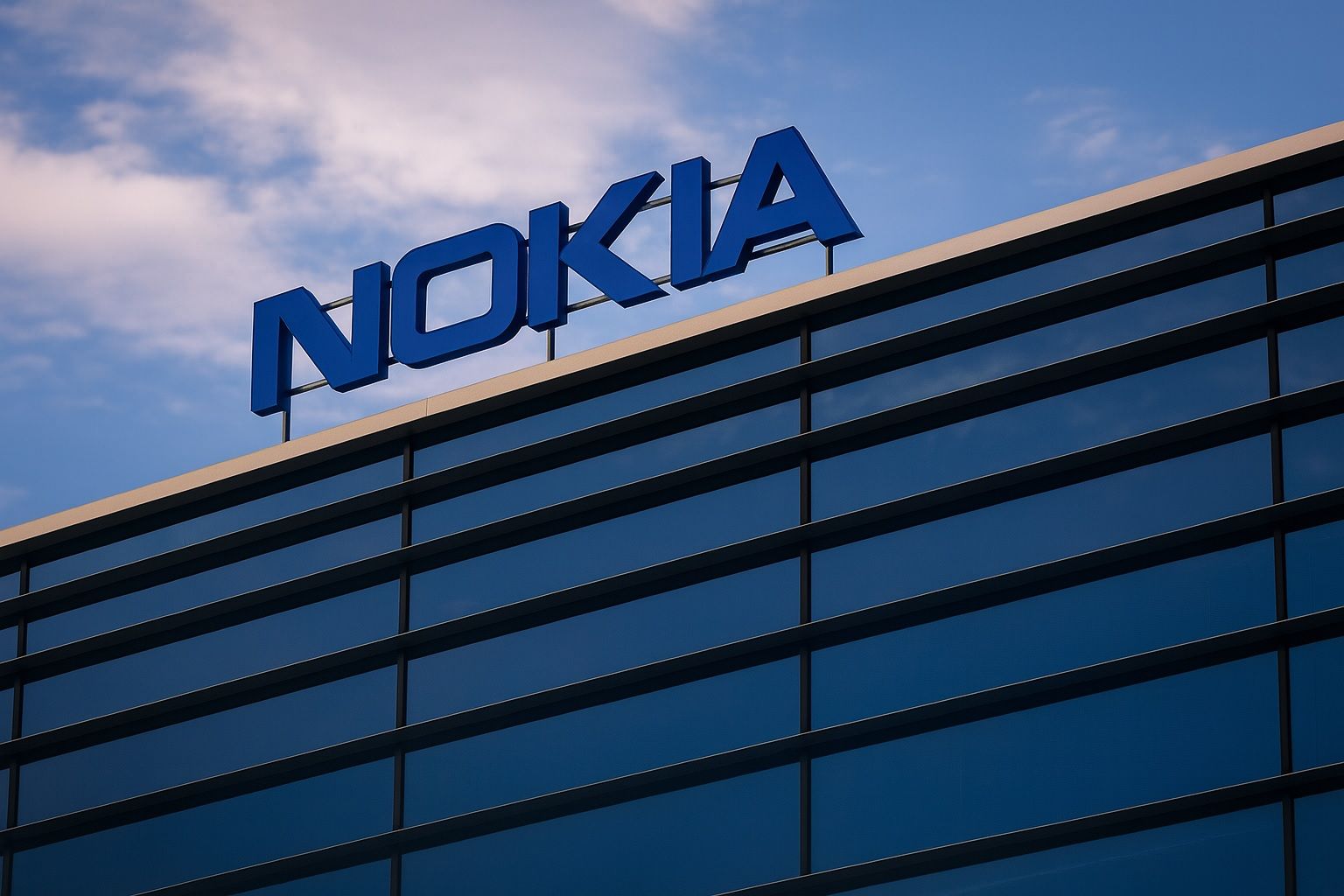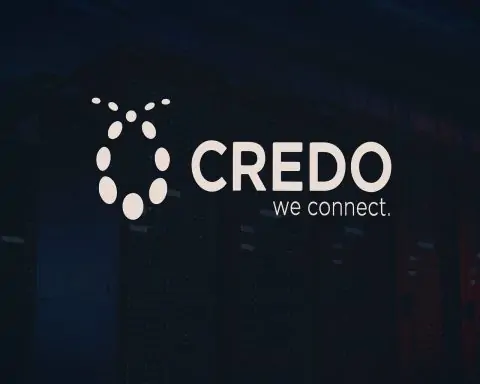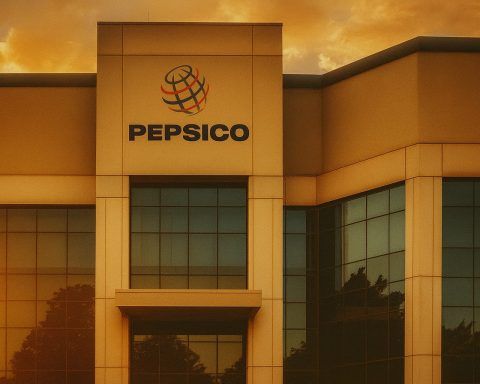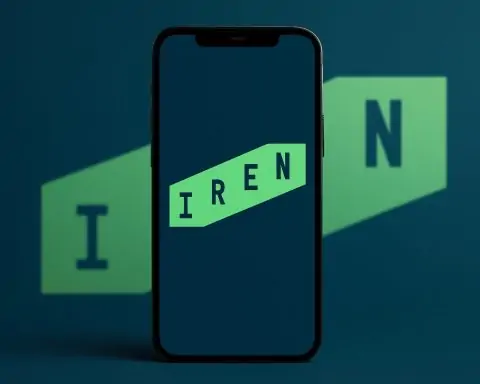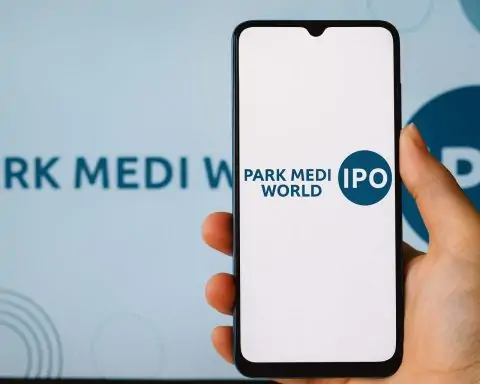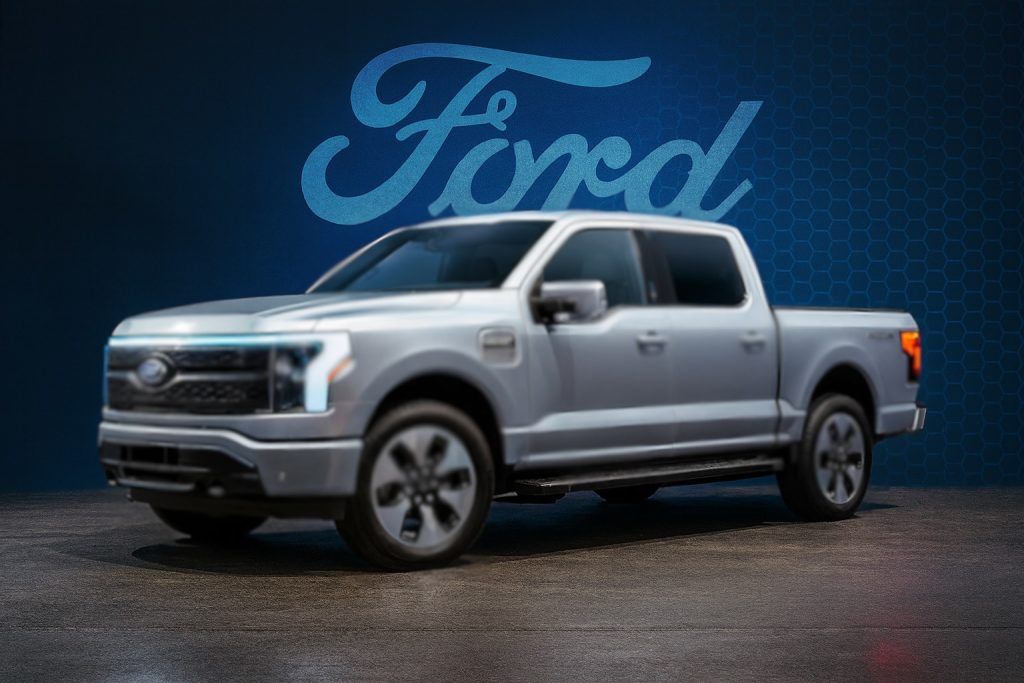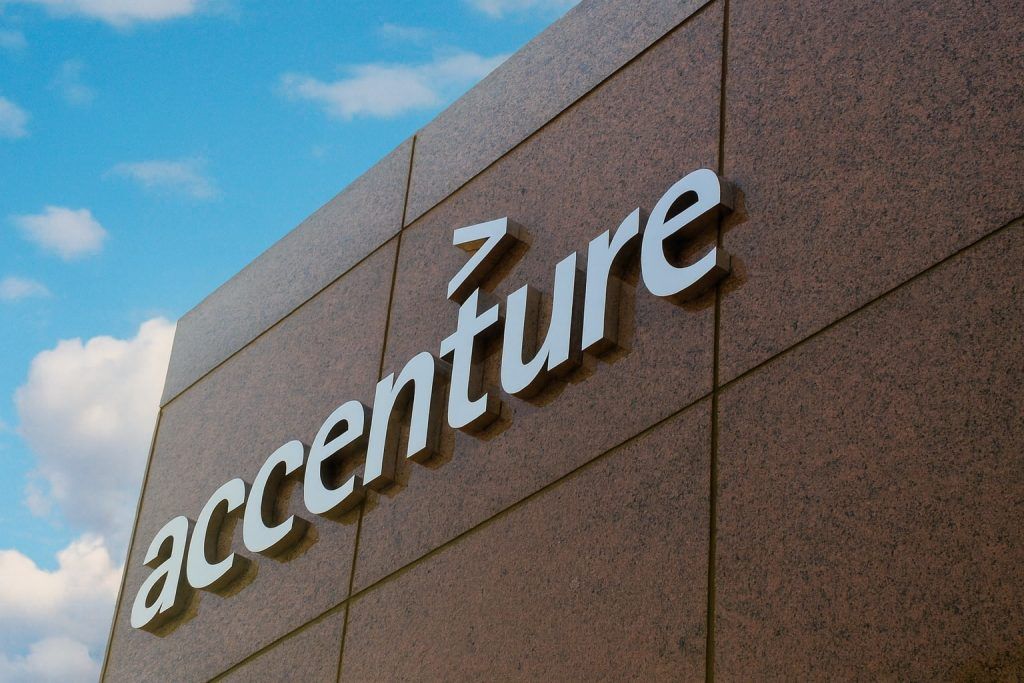- Stock Rally: Nokia shares jumped ~20–25% in late October 2025, hitting multi-year highs after a strong Q3 earnings report and blockbuster deals [1] [2]. (The U.S. ADR (NYSE:NOK) briefly spiked to $8.19 on Oct. 28, up from ~$6.36 on Oct. 27 [3] [4].)
- Nvidia Partnership: On Oct. 28 Nokia announced that chipmaker NVIDIA would invest $1.0 billion to buy ~2.9% of Nokia (166.4 million new shares at $6.01 each), forming a strategic AI/6G networking alliance [5] [6]. CEO Justin Hotard praised the deal, saying he “love[s] the pace” of Nvidia’s innovation and wants Nokia to match that speed [7]. NVIDIA’s CEO Jensen Huang called the pact a move to make the U.S. “the center” of 6G development [8].
- CEO on AI Demand: Hotard emphasized that AI-driven demand is “robust” and accelerating [9]. Nokia now gets about 6% of sales from hyperscale “AI/cloud” customers (up from 5% last quarter) [10]. Analysts note that Nokia’s optical and cloud businesses (bolstered by this year’s Infinera acquisition) may now outgrow its traditional mobile networks segment [11] [12].
- Major Contract Wins: In mid-Oct. Nokia secured several large 5G and network deals. These include an extension of its 5G partnership with Vodafone/Vodacom (Europe & Africa), a £2.0 billion Vodafone–Three UK 5G network contract (~7,000 sites, Nokia supplying RAN and core equipment) [13] [14], a “green” 5G optical network for Rakuten Mobile in Japan (aimed at cutting network power use ~24%) [15] [16], a core-network upgrade for Elisa (Finland) to support 5.5G (improving efficiency ~20%) [17], and a five-year network modernization deal with German utility E.ON (providing IP-routing, optical and fiber solutions) to cut grid-communications energy use by roughly 50% [18] [19].
- Strong Q3 Results: Nokia’s Oct. 23 Q3 report beat expectations [20]. Sales were €4.83 billion (≈+12% YoY, above the €4.6B forecast) [21] and comparable operating profit €435 M (vs. ~€342 M consensus) [22]. Optical Networks and cloud services were the growth drivers, thanks in part to the Infinera deal [23]. Management raised full-year profit guidance to €1.7–2.2 billion from up-to-€2.1 billion [24]. Hotard told reporters “AI and data center demand continues to be robust… it continues to accelerate” [25]. Shares immediately jumped ~10.6% on the earnings release [26], signaling relief after earlier profit warnings.
- Analyst Outlook: Wall Street has turned cautiously bullish. Jefferies upgraded Nokia to Buy (target €6.60) and JPMorgan made it Overweight (target ~$7.10) after Q3 [27] [28]. Other firms (e.g. BNP Paribas, Raymond James, Deutsche Bank) also raised ratings or targets, contributing to an overall consensus of “Moderate Buy” [29] [30]. Analysts project full-year EPS around €0.34–0.36 [31] [32]. At recent prices, Nokia trades roughly 28–30× 2026 EPS (similar to Cisco’s multiple) and yields ~3% [33] [34].
- Valuation & Performance: As of late Oct., NOK trades around $7–8 per share. The stock is up about +20% in the past month and roughly +78% year-to-date [35] [36], reflecting the wave of positive news. (By comparison, its Helsinki listing jumped over 20% on Oct. 28 to a multi-year high [37].) Still, some analysts warn that much of this optimism is already priced in: Nokia’s share price implies growth at a premium multiple, despite still-challenging core telecom demand [38] [39].
Earnings Beat Fuels the Rally
Nokia’s October 23 earnings release was the initial catalyst. The Finnish equipment maker reported Q3 revenue of €4.83 billion, +12% year-on-year, well ahead of the ~€4.6B Street estimate [40]. Network Infrastructure and Cloud & Network Services both grew solidly, as hyperscaler/cloud customers accounted for ~6% of sales [41]. Comparable operating profit of €435 million far exceeded analysts’ ~€342 M estimate [42]. Management noted that cloud and AI data-center demand helped optical sales jump 19% in constant currency. Nokia raised its full-year operating-profit outlook to €1.7–2.2 billion (from up to €2.1B) [43]. CEO Justin Hotard highlighted the momentum, telling reporters “AI and data center demand continues to be robust… it continues to accelerate” [44].
The market reacted strongly. On Oct. 23, Nokia’s Helsinki-listed shares popped 10.6% to €5.20 – a three-year high [45]. U.S. ADRs (NYSE:NOK) saw a similar jump. This outsized move added roughly €3 billion to Nokia’s market cap in a single day. The good news and upbeat guidance set the stage for even larger gains the following week.
Nvidia Partnership Powers AI Narrative
Just days later, on Oct. 28 Nokia and NVIDIA unveiled a landmark agreement, further turbocharging the stock [46] [47]. Under the deal, NVIDIA will invest $1.0 billion to acquire 166.4 million new Nokia shares at $6.01 each, making NVIDIA a ~2.9% shareholder [48] [49]. The non-exclusive partnership calls for Nokia and NVIDIA to co-develop next-generation “AI-native” radio networks and data-center switching solutions for 6G. It also includes collaborating with T-Mobile US on AI-powered 6G radio technology trials [50].
NVIDIA CEO Jensen Huang lauded the plan, saying it would help make the United States “the center” of the next 6G revolution [51]. For Nokia, the investment not only provides cash for growth, but also a strong endorsement of its AI strategy. Analysts like Paolo Pescatore of PP Foresight called it “a strong endorsement of Nokia’s capabilities,” given the global hype around AI networks [52]. Nokia’s CEO agreed – he said he “love[s] the pace at which NVIDIA moves… It’s a pace that I aspire for us to move at Nokia” [53].
On the day of the announcement, Nokia’s stock skyrocketed ~20% (adding roughly €6–7 billion in market cap) [54] [55]. Shares briefly hit an intraday high of $8.19 on Oct. 28 [56], levels not seen since 2015. After profit-taking in the following session, the stock settled around $7.3–7.8, but remained far above pre-news levels [57] [58].
Breakthrough 5G and Infrastructure Deals
Beyond earnings and the Nvidia tie-up, Nokia has been winning big contracts in recent weeks – especially in 5G and private networks. In Europe, Nokia secured a multi-year expansion of its 5G network with Vodafone/Vodacom (across Europe and parts of Africa) [59]. Importantly, Nokia returned to the UK as part of the new Vodafone-Three (UK) venture: in Sept. VodafoneThree awarded a £2.0 billion 5G contract over ~7,000 sites to Ericsson and Nokia [60] [61], with Nokia supplying radio-access and core gear. (Reuters noted this deal marked Nokia’s comeback to UK mobile networks [62].)
In Asia, Nokia is working with Rakuten Mobile of Japan on a “green” 5G deployment. Using Nokia’s DWDM optical transmission technology, the project is expected to cut Rakuten’s network energy use by roughly 24% [63] [64] – aligning with Rakuten’s sustainability goals. Nokia also expanded its core network and 5G services with Finland’s Elisa, targeting about 20% energy savings in that operator’s next-generation network [65].
On Oct. 28, Nokia announced a landmark agreement with E.ON – one of Europe’s largest energy companies. Under this five-year partnership, Nokia will modernize E.ON’s power-distribution communications (providing IP routing, optical transport, fixed broadband access, etc.) to create a “high-efficiency” network. The new Nokia-powered infrastructure is designed to halve the network’s energy consumption compared to legacy equipment [66]. E.ON hailed Nokia as a “trusted long-term supplier” ready to help deliver “secure, reliable and energy-efficient services” [67].
These deals – from telco partners like Vodafone/Vodacom and Elisa to enterprise clients like E.ON – underscore Nokia’s broad reach. They also reinforce the narrative that Nokia is a key beneficiary of ongoing 5G buildouts and energy/efficiency trends worldwide. As Ts2.tech notes, the steady drumbeat of contracts has been a catalyst for Nokia’s October rally [68].
Strategic Shift to AI, Optical and Beyond
Nokia has actively repositioned itself beyond traditional telecom hardware. Its $2.3 billion acquisition of Infinera (completed in March 2025) has given it a strong footprint in optical networking – the backbone of cloud data centers. According to Reuters, Infinera’s technology has boosted Nokia into a leading maker of data-center optical transport equipment [69]. In fact, analysts now expect the optical/data-center business to become Nokia’s biggest revenue source, for the first time since 2017 [70]. Hotard himself says Nokia’s “biggest opportunity is clearly in the hyperscalers and the neoclouds” – i.e. the giant cloud/AI providers [71].
Nokia is also pushing into network virtualization and AI solutions. In Oct. 2025 it announced an AI-driven RAN automation partnership with Hewlett Packard Enterprise (bringing HPE’s AI RAN software into Nokia’s 5G networks) [72]. The goal is to offer carriers “smarter, self-optimizing” networks, cutting operational costs and boosting performance. Meanwhile, Nokia has hinted at defense and secure-communications opportunities, as NATO countries ramp up military spending and look for encrypted network gear [73].
Financially, the company’s balance sheet remains healthy (debt is modest, and cash flows solid), and it pays a ~3% dividend. There is even market chatter about potential asset sales (e.g. spinning off the HERE maps unit) to focus further on core networks [74].
Analyst Commentary & Stock Outlook
With the newsflow piling up, analysts have updated their valuations. Jefferies now sees €6.60 as a fair price (Buy), and JPMorgan around $7.10 (Overweight) [75] [76]. Santander and BNP have also turned positive. Based on Visible Alpha data, analysts forecast gradual sales growth to about €21.5 B by 2028, driven by cloud/optical [77]. However, some strategists caution that much of the good news is already reflected in the stock. Reuters Breakingviews warned that while Nokia’s AI tie-up is exciting, the “near-term benefits are murky” for shareholders [78]. With Nokia now trading near 17× forward earnings – comparable to Cisco’s ratio – any slowdown in telco spending or execution missteps could trigger a pullback [79].
Notably, Nokia is still facing headwinds in its legacy business. U.S. carriers like AT&T have begun phasing out some Nokia gear in favor of Ericsson (which captured a large AT&T 5G deal last year) [80]. Competition from Ericsson, Huawei (in some markets), and emerging players keeps pricing pressure high. But the recent VodafoneThree deal in the UK – shared with Ericsson – shows that Nokia remains very much in the game outside the U.S. [81] [82]. In China, some reports suggest regulators are limiting foreign vendors, which could be a challenge going forward.
Looking Ahead
Nokia’s late-October surge reflects a convergence of positive signals: better-than-feared fundamentals and a convincing growth narrative. Investors will watch whether Nokia can deliver on the hype. Key things to monitor include the upcoming Q4 results (for further evidence of optical/cloud strength), execution on the NVIDIA partnership (joint product announcements or trials), and progress on its large contracts (VodafoneThree rollouts, the E.ON modernization, etc.). While risks remain, analysts note that Nokia is finally talking the language of AI and future networks – a narrative that has so far put it at a relative premium to its peers [83]. As one analyst put it, Nokia’s network divisions “house its AI-linked kit,” and investors are betting that this “side hustle” can offset weakness in traditional telco equipment [84].
Sources: Company filings and press releases; Reuters and other news reports [85] [86] [87] [88] [89] [90] [91] [92], among others. Each fact and quote above is drawn from the cited materials.
References
1. www.reuters.com, 2. www.reuters.com, 3. www.marketbeat.com, 4. 247wallst.com, 5. www.globenewswire.com, 6. www.reuters.com, 7. www.reuters.com, 8. www.reuters.com, 9. www.reuters.com, 10. www.reuters.com, 11. www.reuters.com, 12. www.reuters.com, 13. www.reuters.com, 14. www.reuters.com, 15. ts2.tech, 16. www.sdxcentral.com, 17. ts2.tech, 18. www.nokia.com, 19. www.nokia.com, 20. www.reuters.com, 21. www.reuters.com, 22. www.reuters.com, 23. www.reuters.com, 24. www.reuters.com, 25. www.reuters.com, 26. www.reuters.com, 27. ts2.tech, 28. www.marketbeat.com, 29. ts2.tech, 30. www.marketbeat.com, 31. ts2.tech, 32. www.marketbeat.com, 33. ts2.tech, 34. www.marketbeat.com, 35. 247wallst.com, 36. www.marketbeat.com, 37. www.reuters.com, 38. ts2.tech, 39. www.reuters.com, 40. www.reuters.com, 41. www.reuters.com, 42. www.reuters.com, 43. www.reuters.com, 44. www.reuters.com, 45. www.reuters.com, 46. www.globenewswire.com, 47. www.reuters.com, 48. www.globenewswire.com, 49. www.reuters.com, 50. www.reuters.com, 51. www.reuters.com, 52. www.reuters.com, 53. www.reuters.com, 54. www.reuters.com, 55. www.reuters.com, 56. www.marketbeat.com, 57. www.marketbeat.com, 58. 247wallst.com, 59. ts2.tech, 60. www.reuters.com, 61. www.reuters.com, 62. www.reuters.com, 63. ts2.tech, 64. www.sdxcentral.com, 65. ts2.tech, 66. www.nokia.com, 67. www.nokia.com, 68. ts2.tech, 69. www.reuters.com, 70. www.reuters.com, 71. www.reuters.com, 72. ts2.tech, 73. ts2.tech, 74. ts2.tech, 75. ts2.tech, 76. www.marketbeat.com, 77. www.reuters.com, 78. www.reuters.com, 79. www.reuters.com, 80. www.reuters.com, 81. www.reuters.com, 82. www.reuters.com, 83. www.reuters.com, 84. www.reuters.com, 85. www.reuters.com, 86. www.reuters.com, 87. www.reuters.com, 88. www.nokia.com, 89. www.reuters.com, 90. www.marketbeat.com, 91. ts2.tech, 92. www.reuters.com
